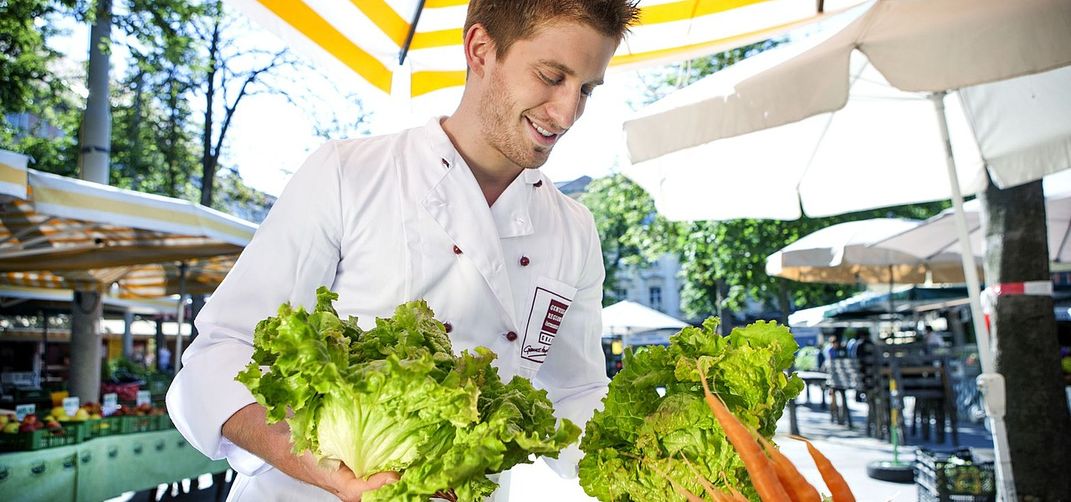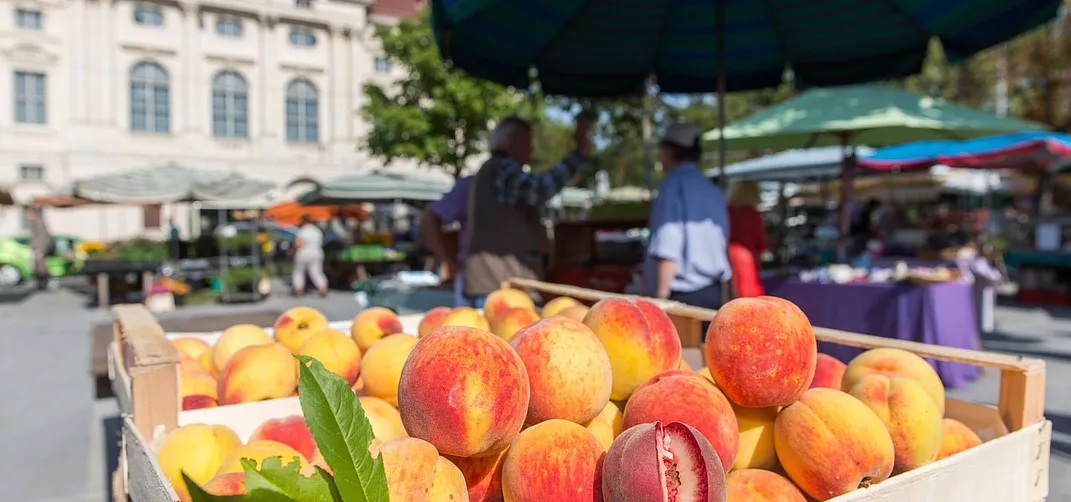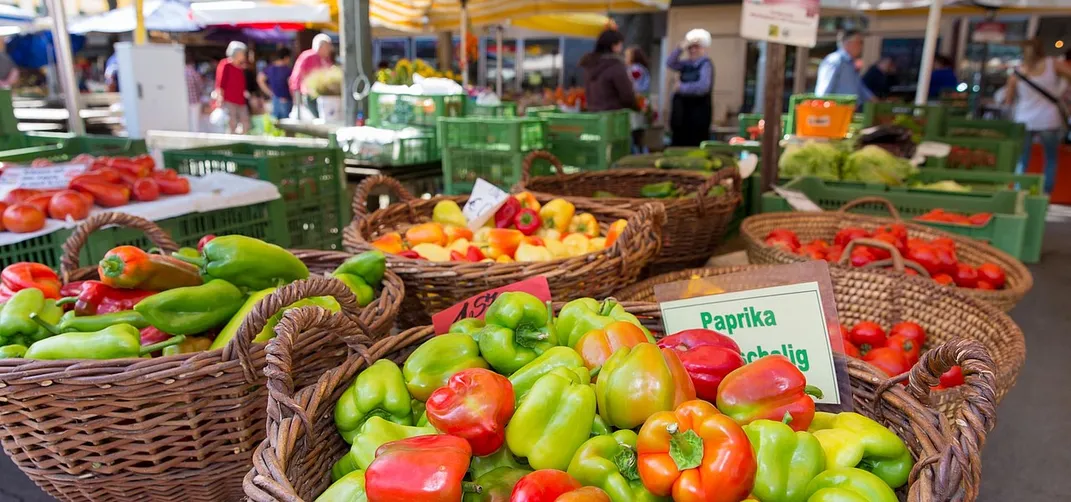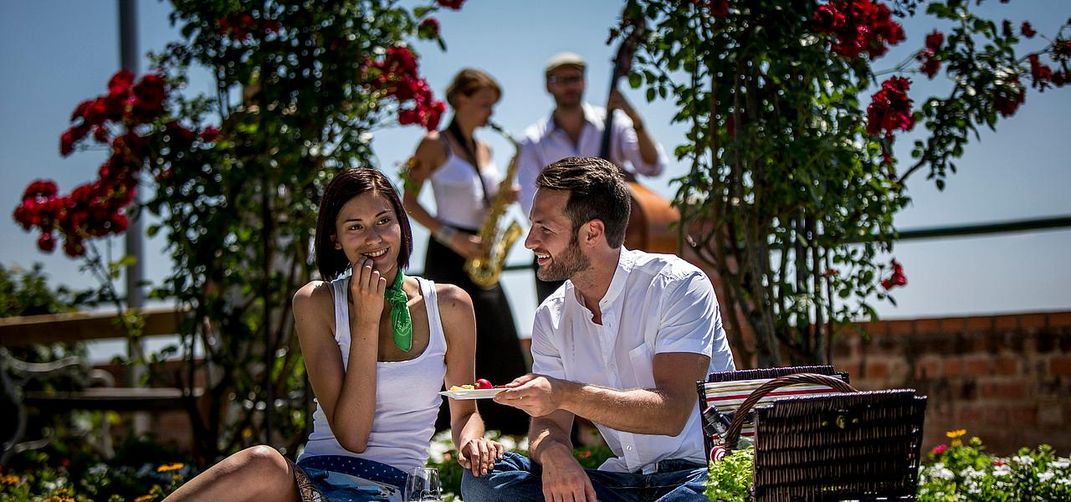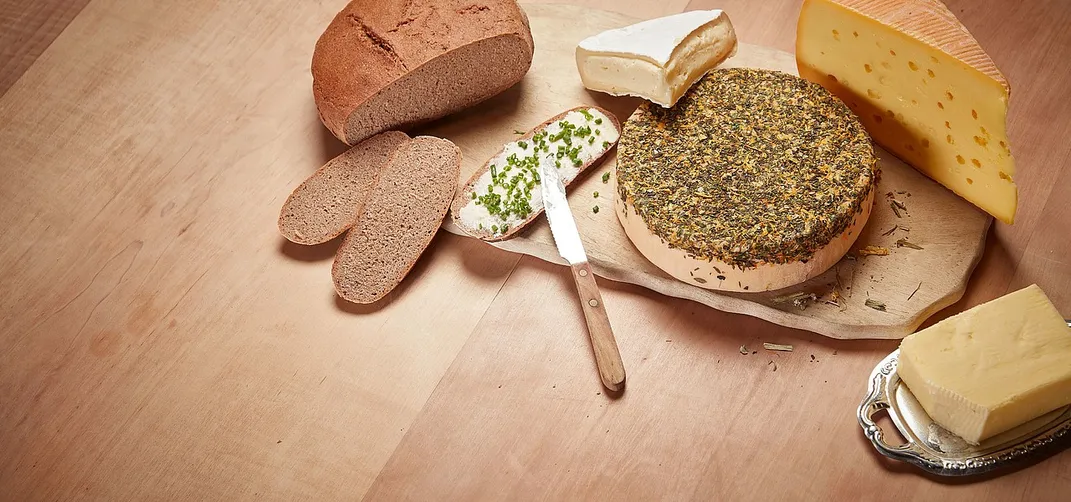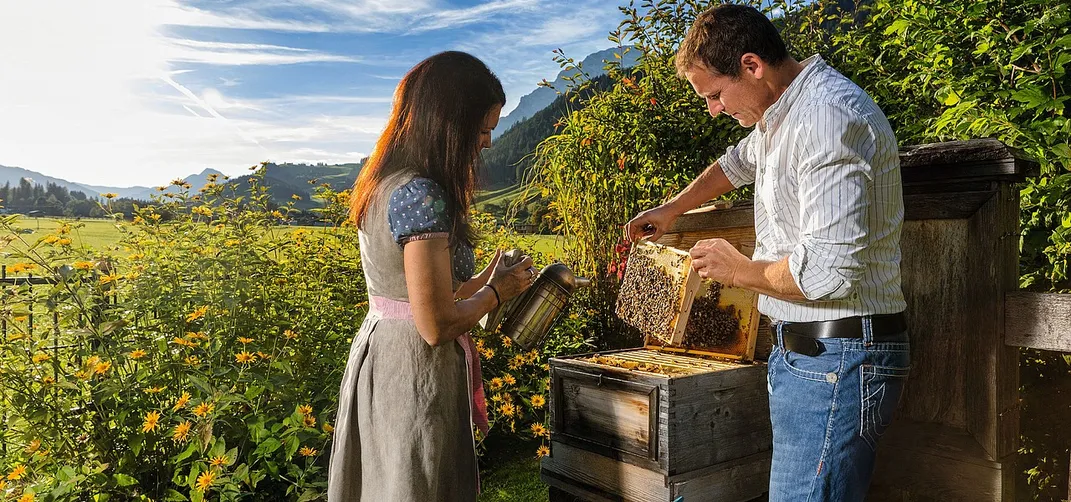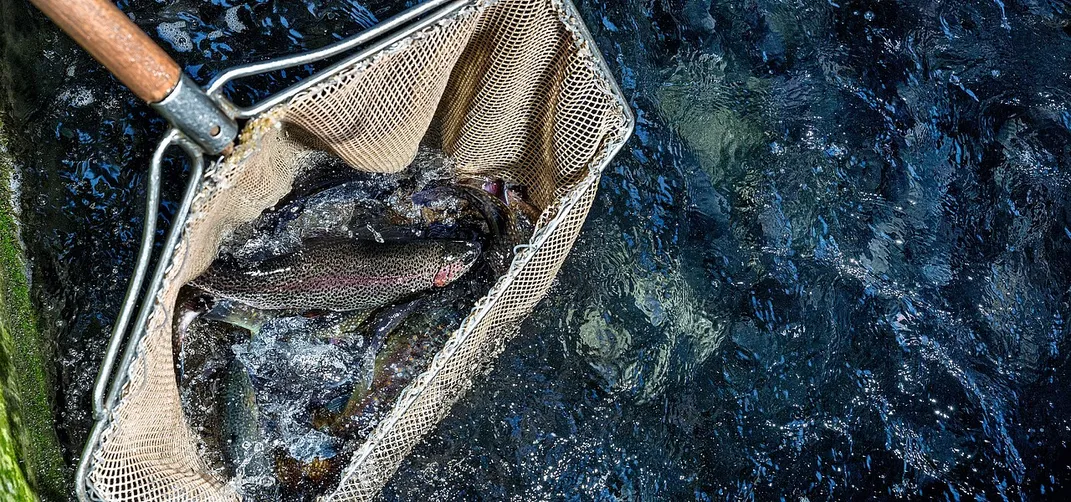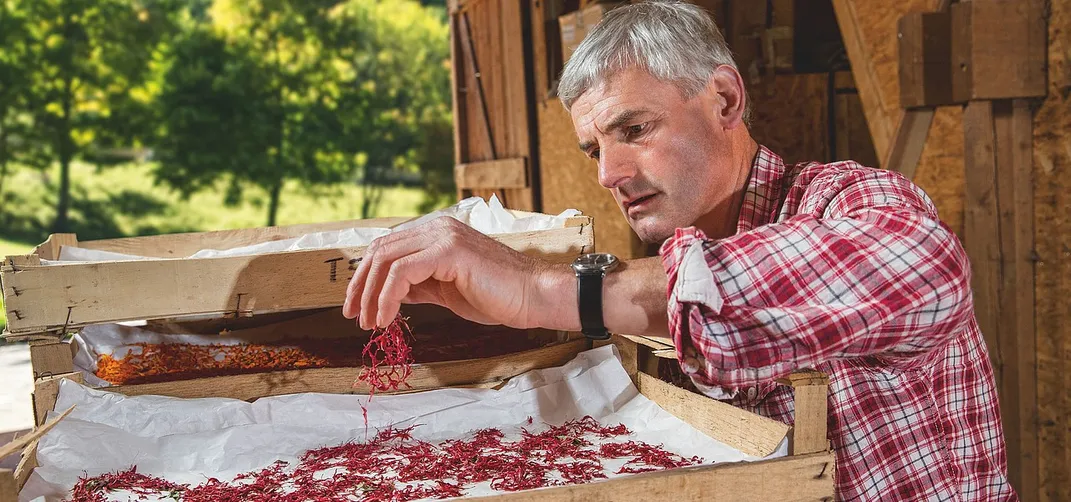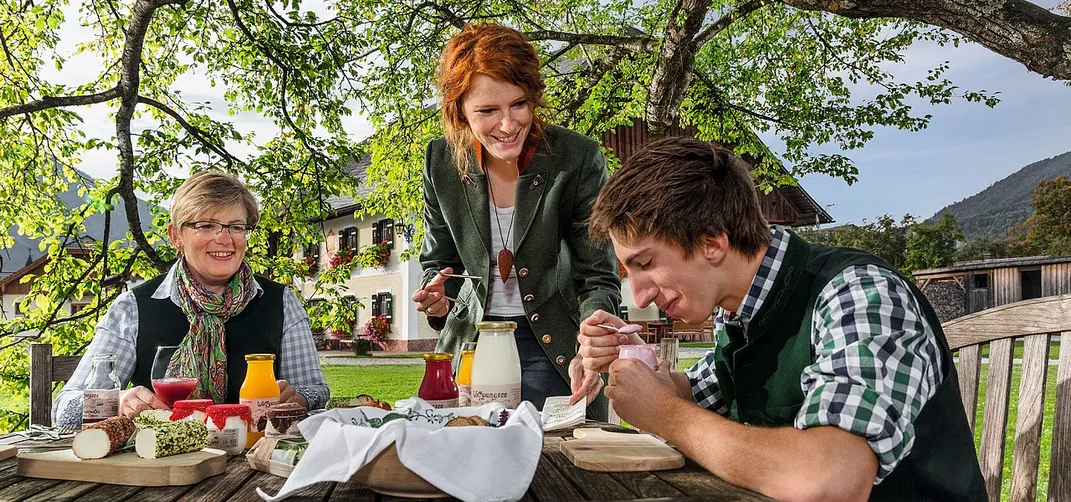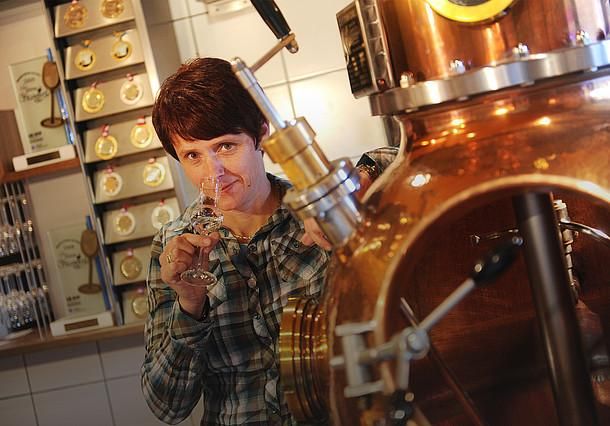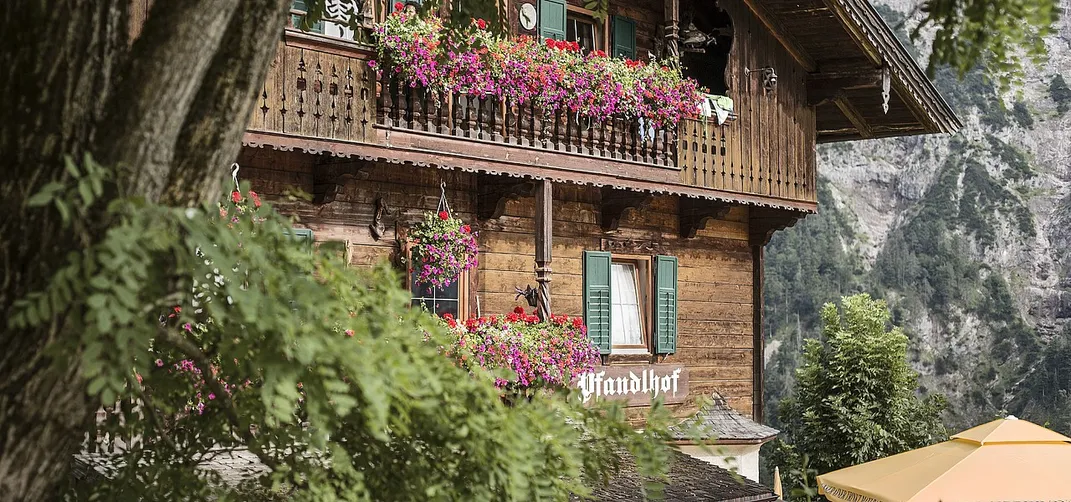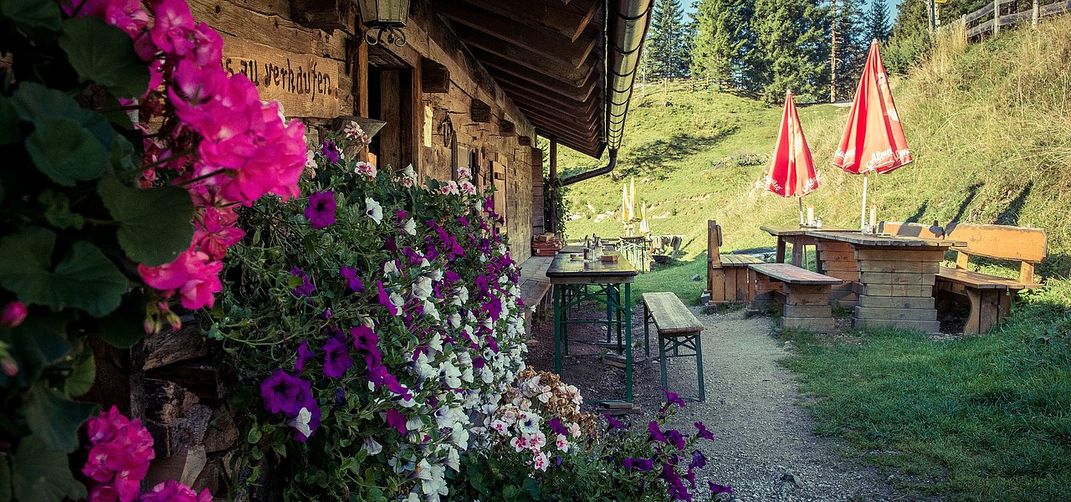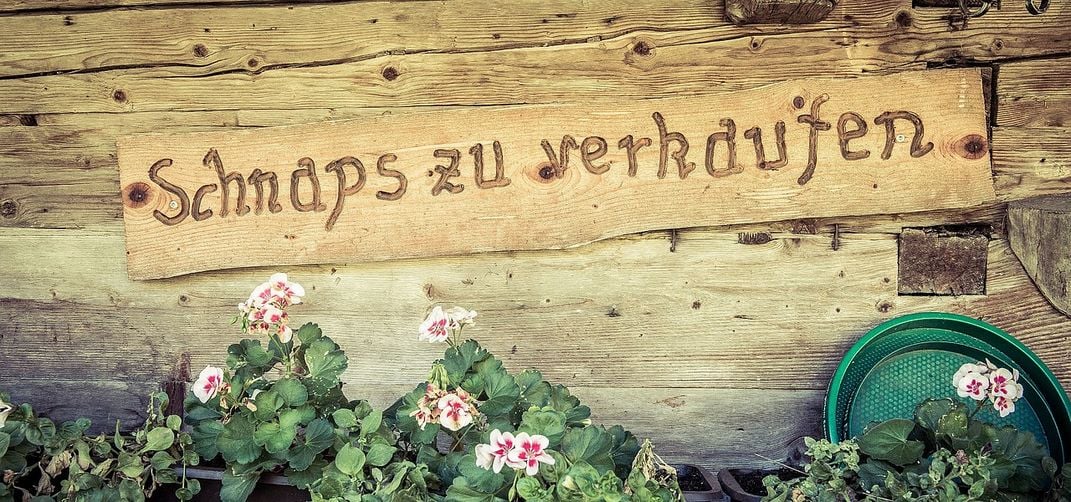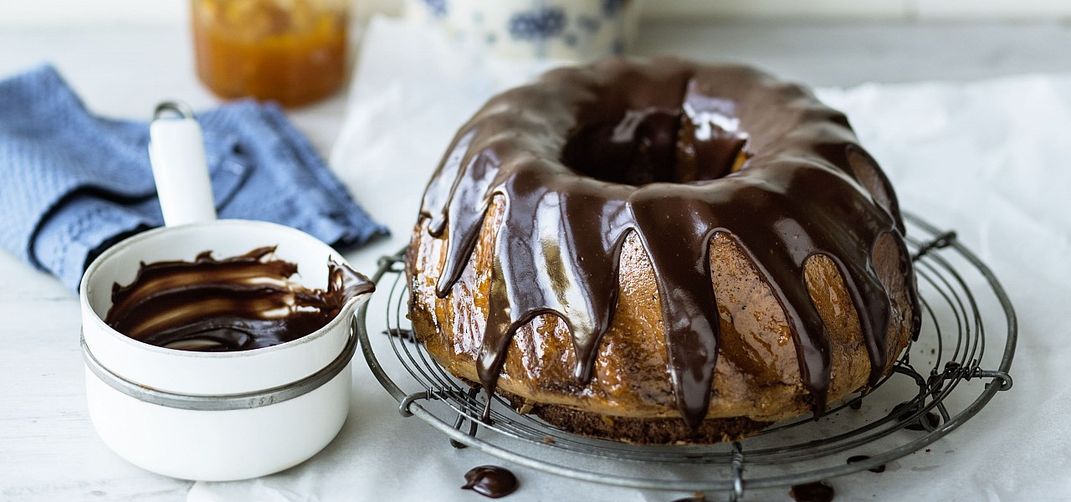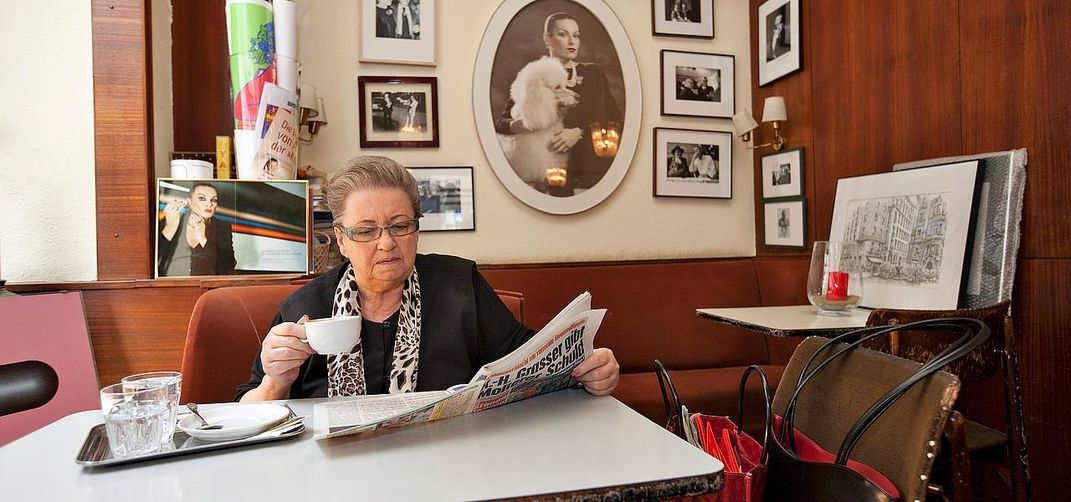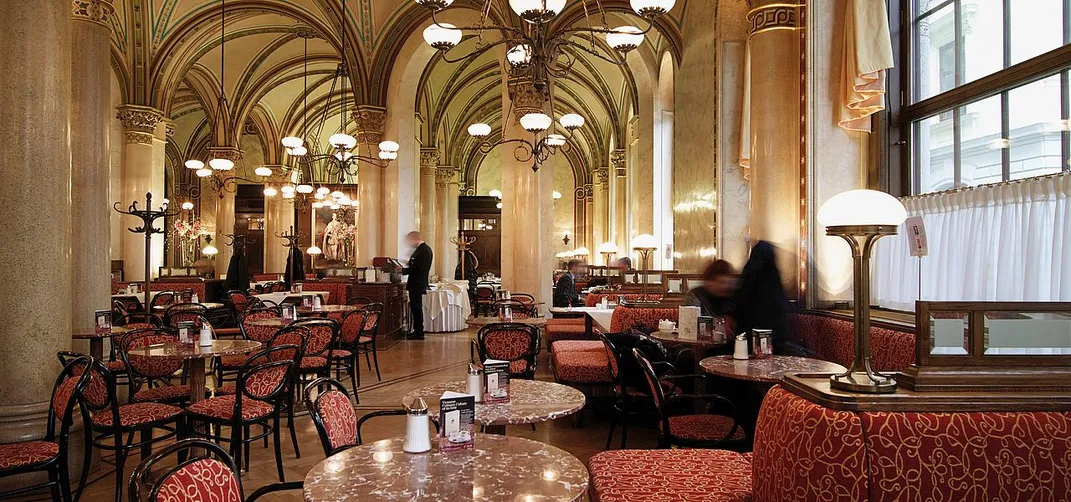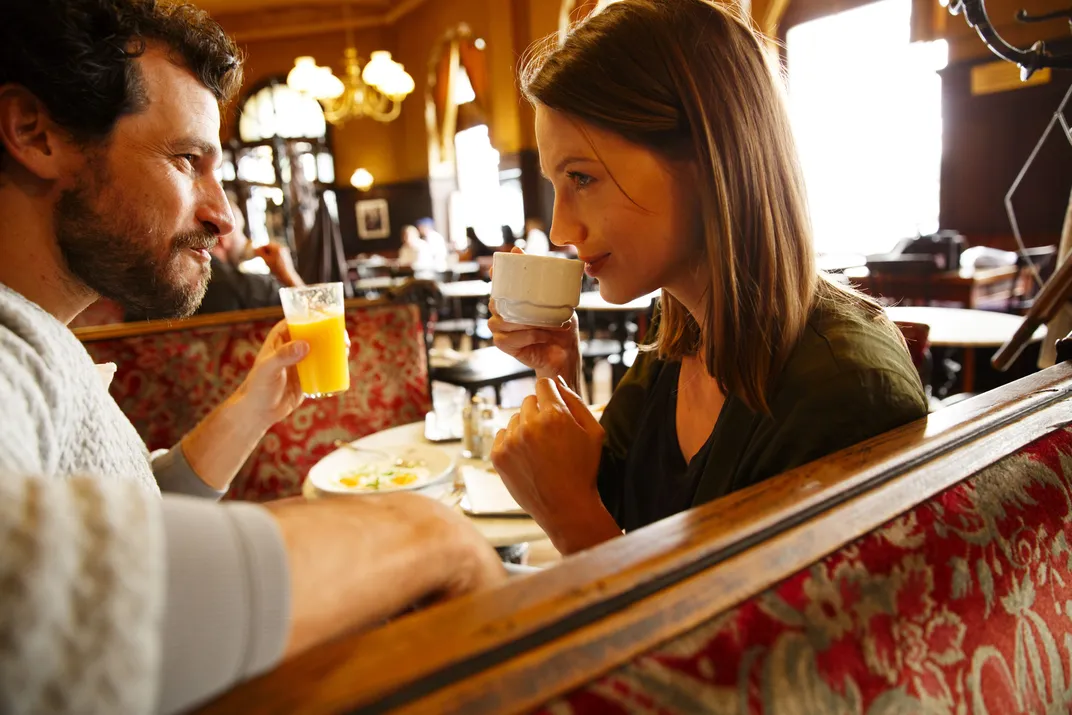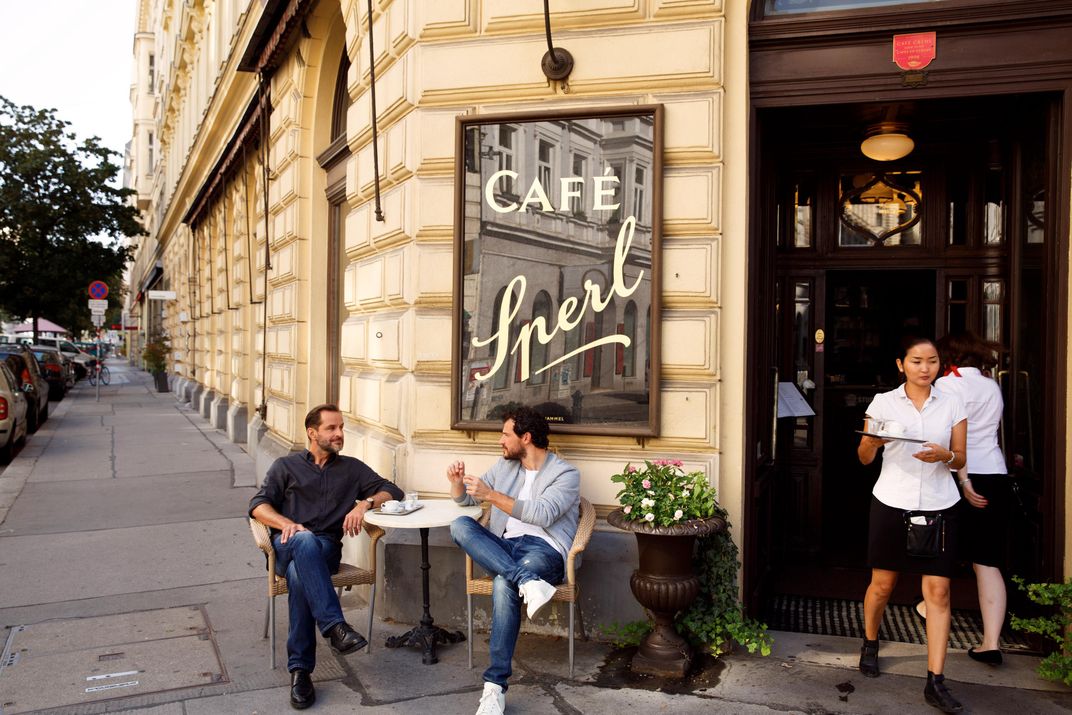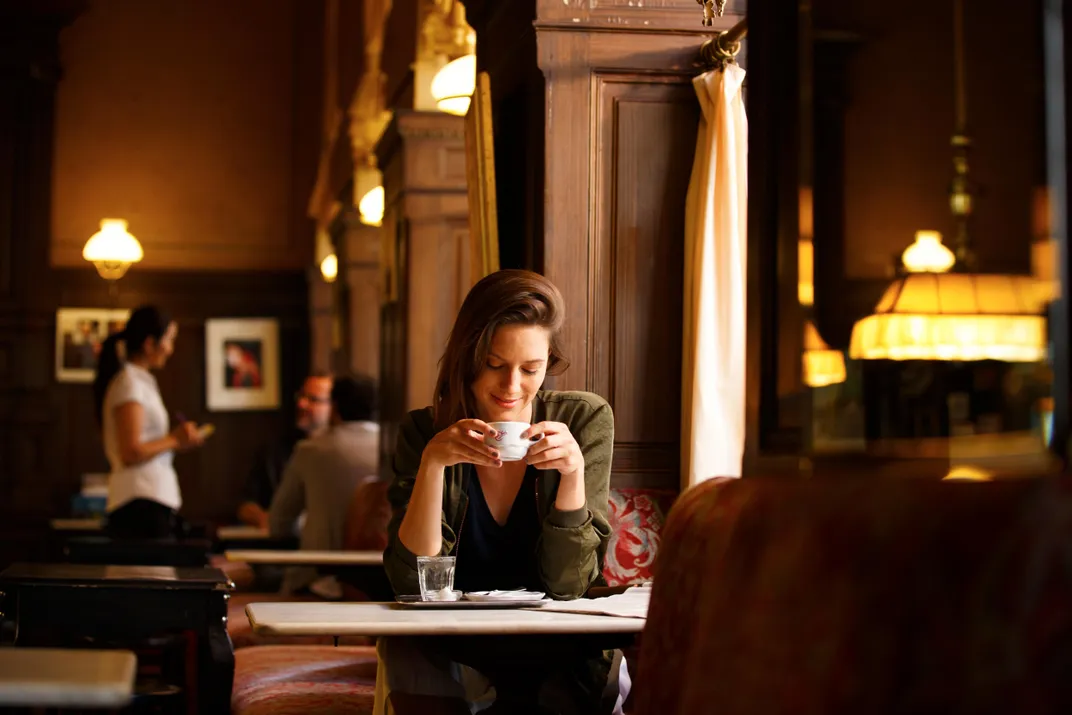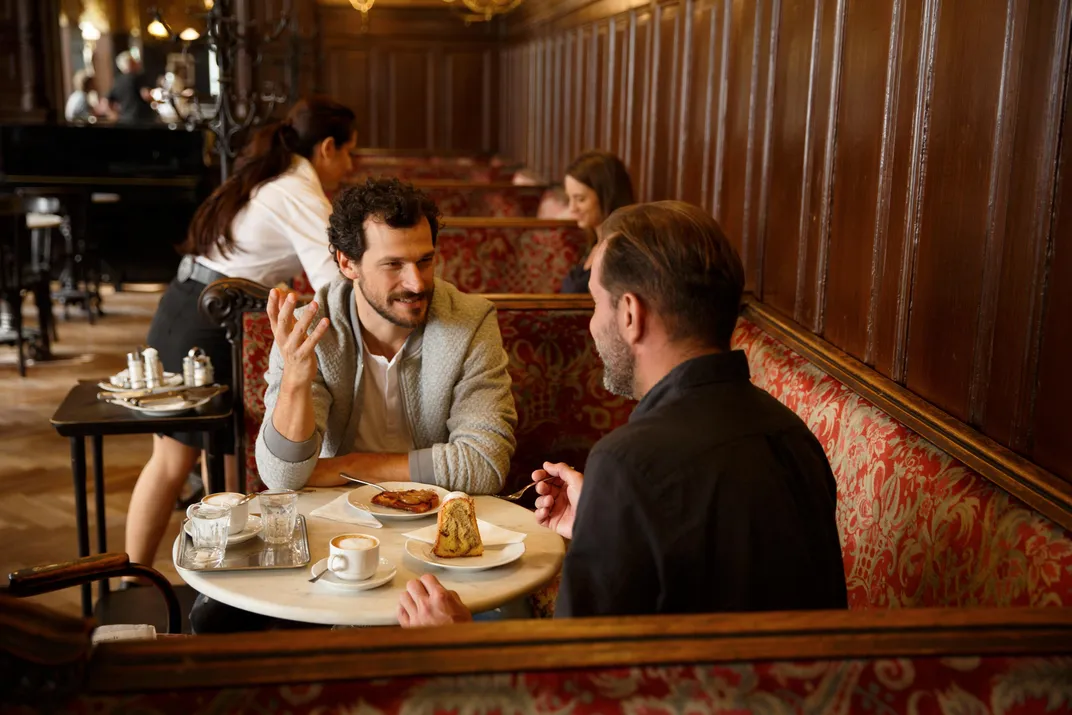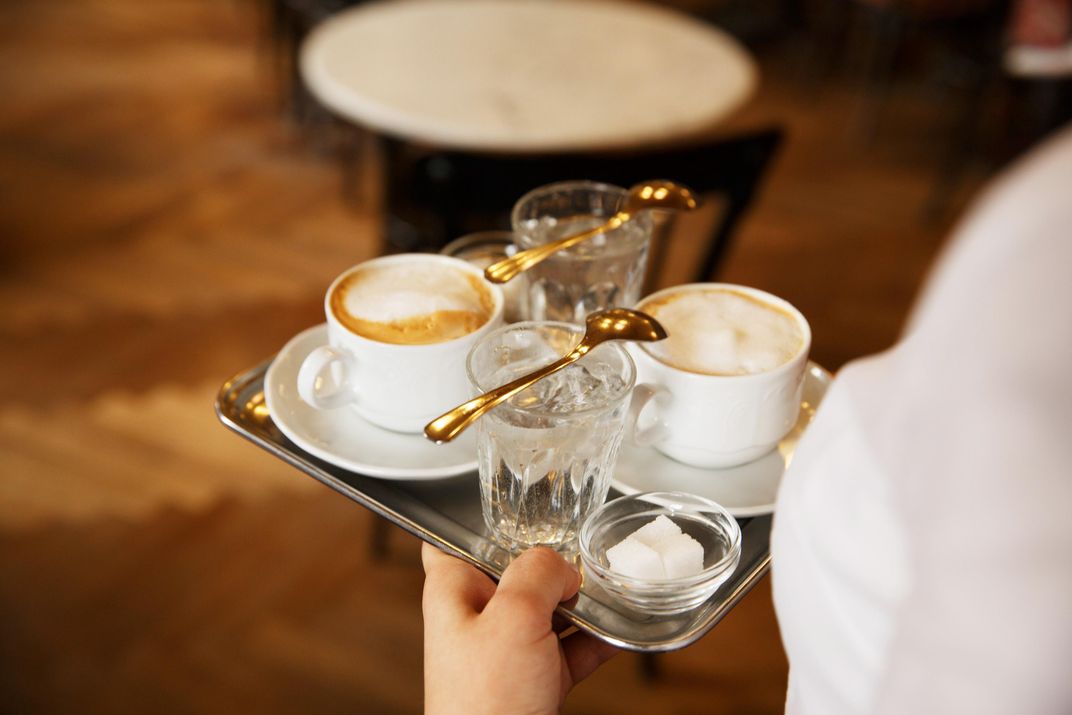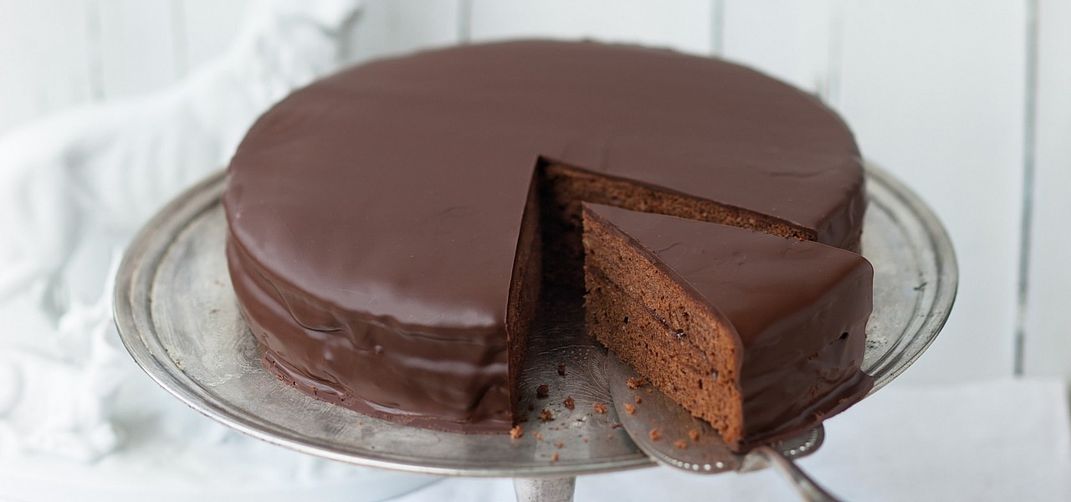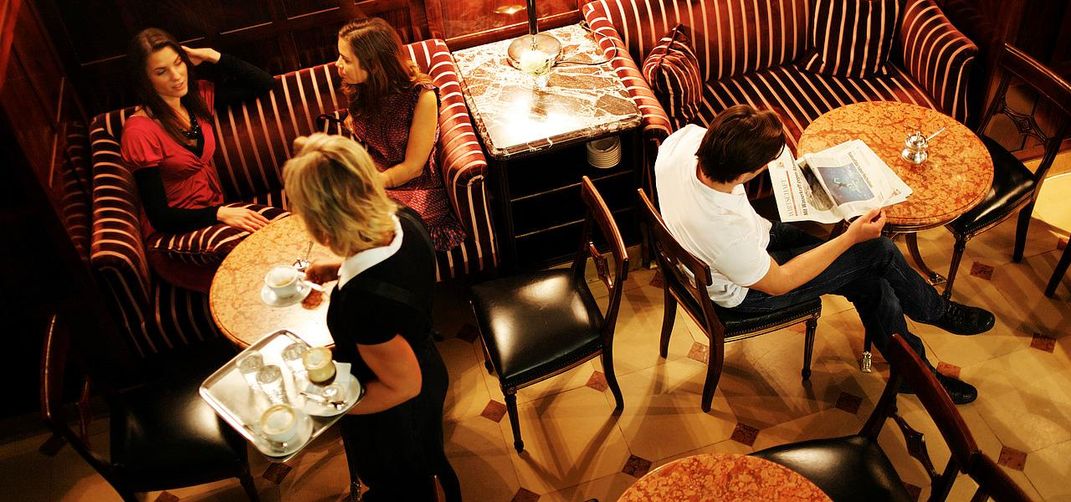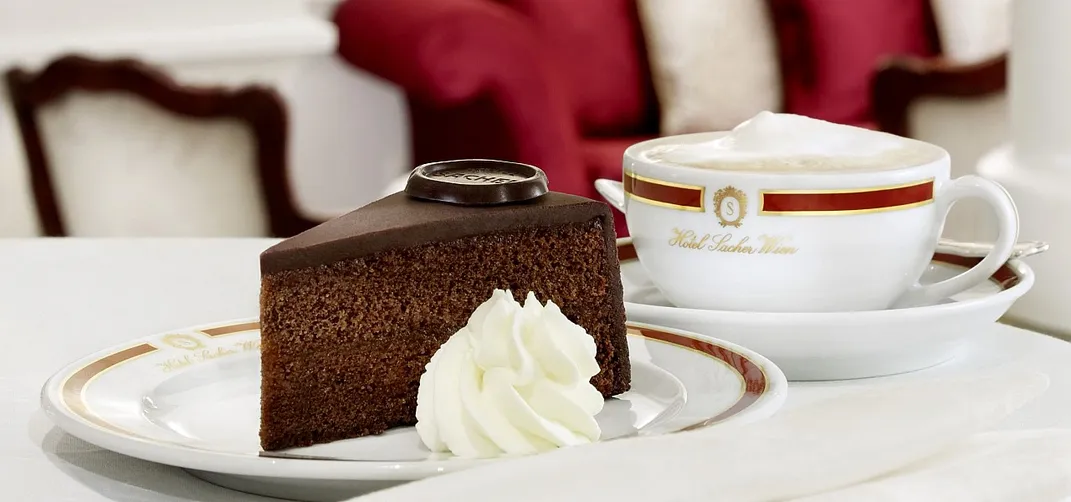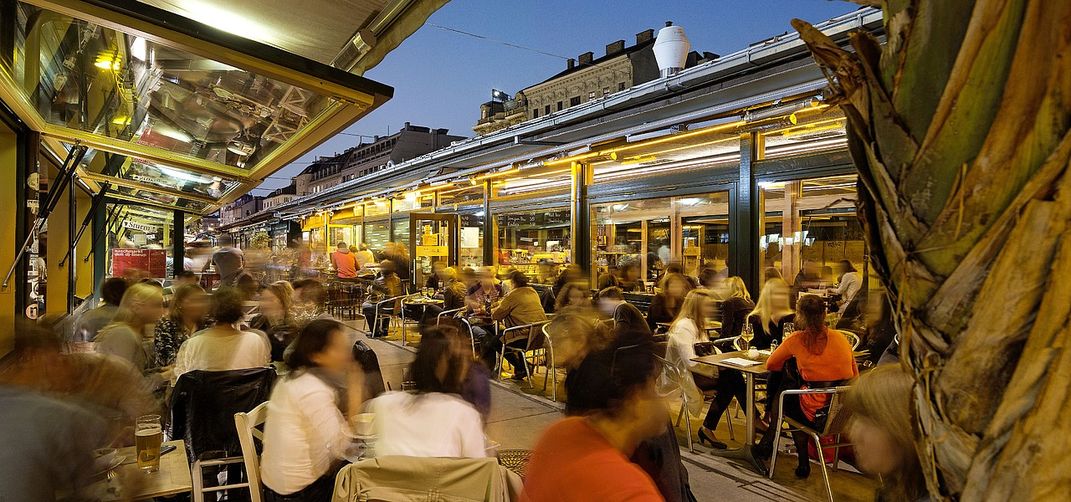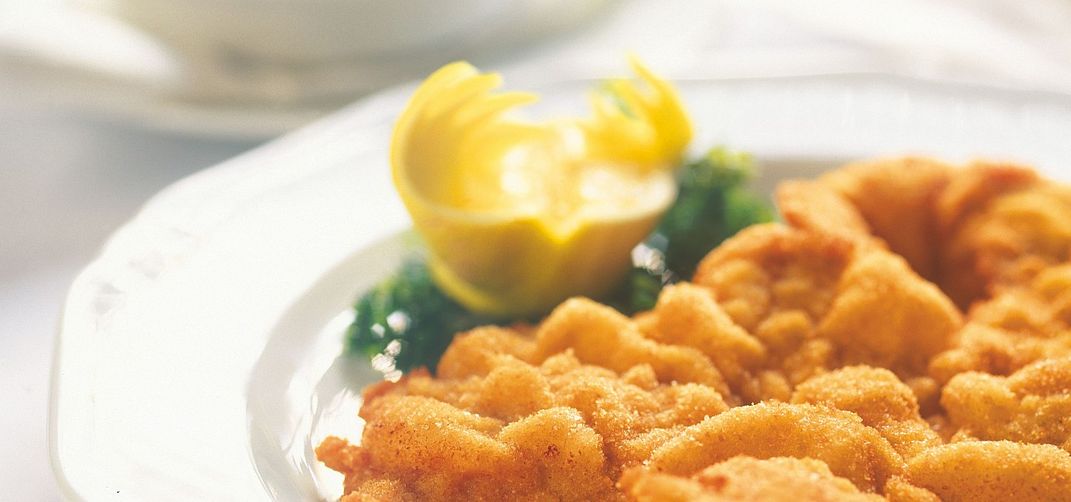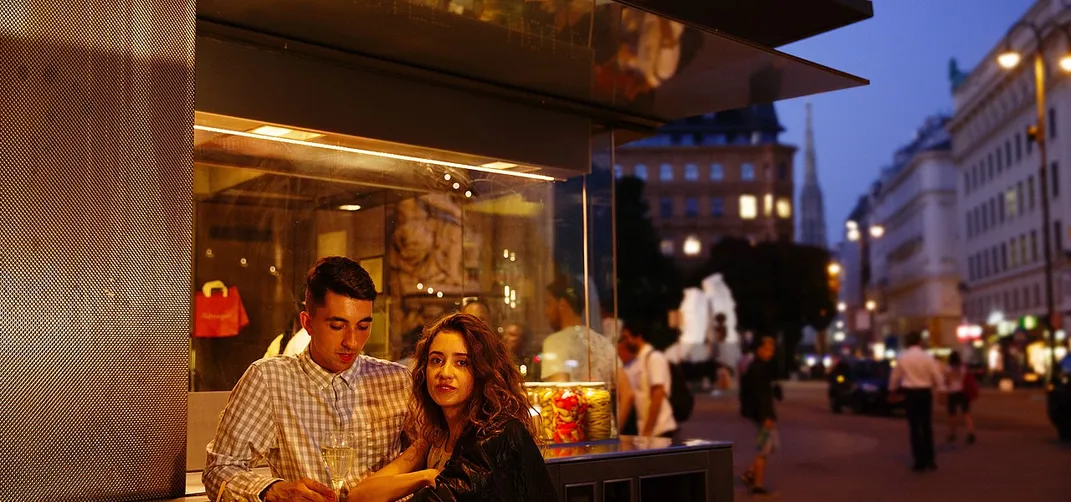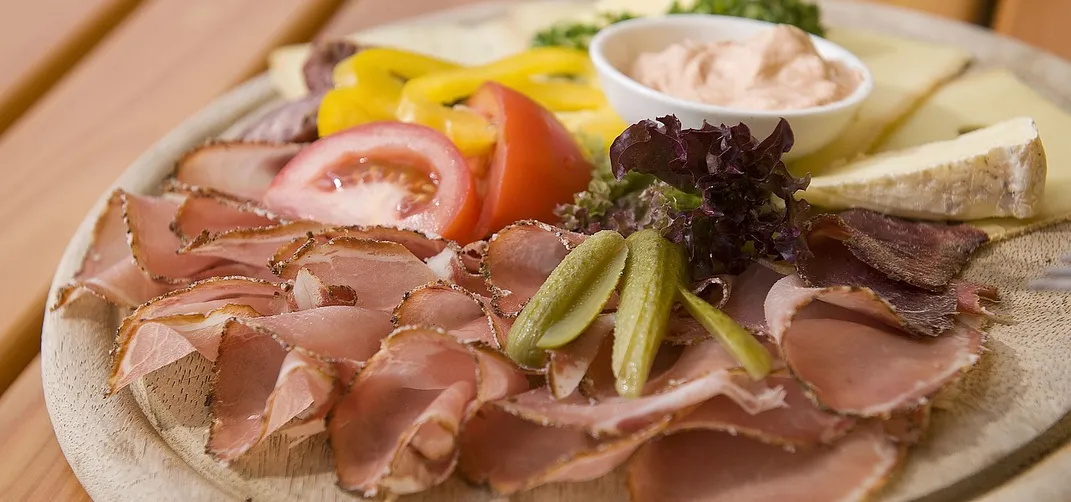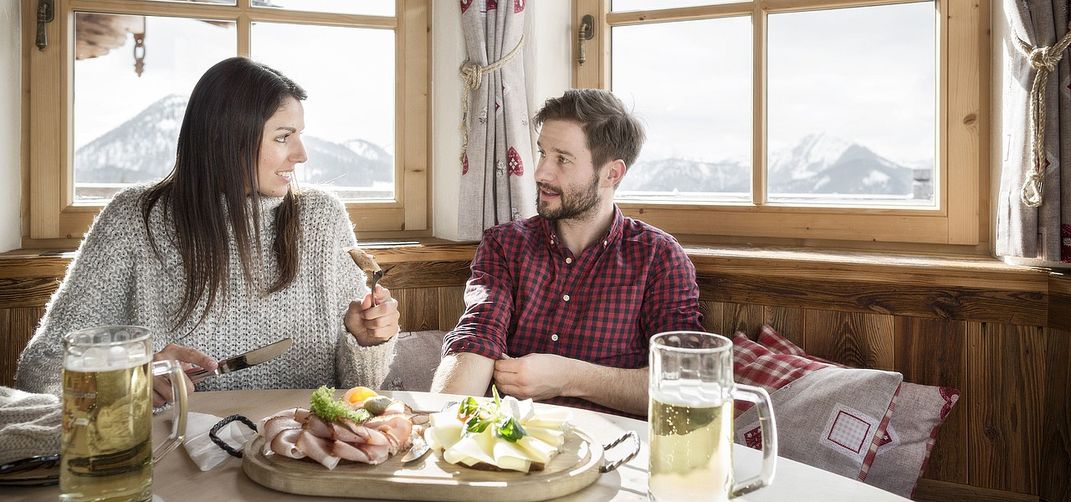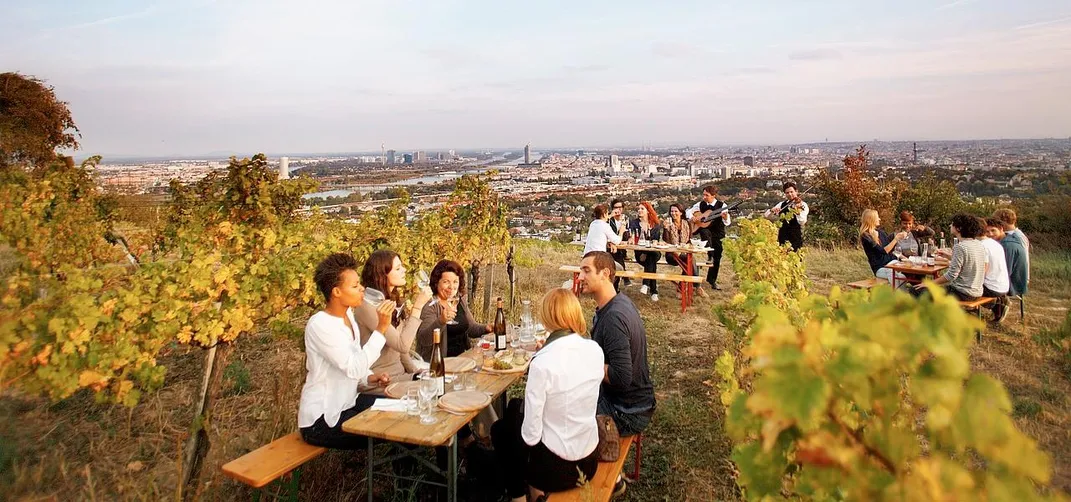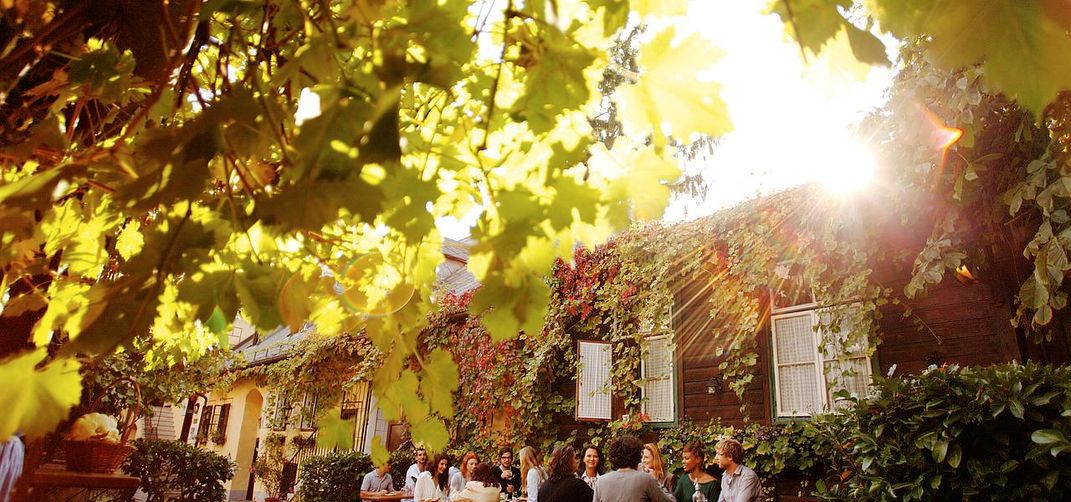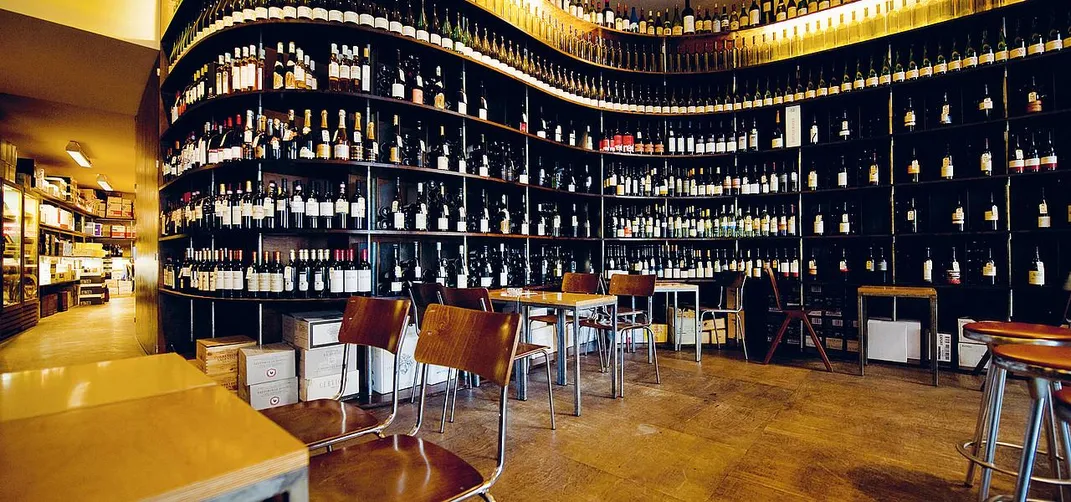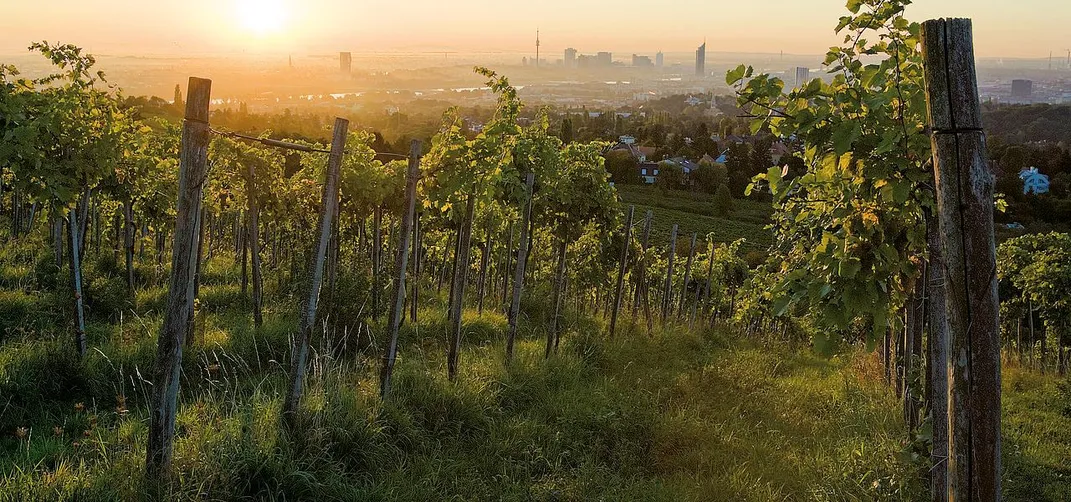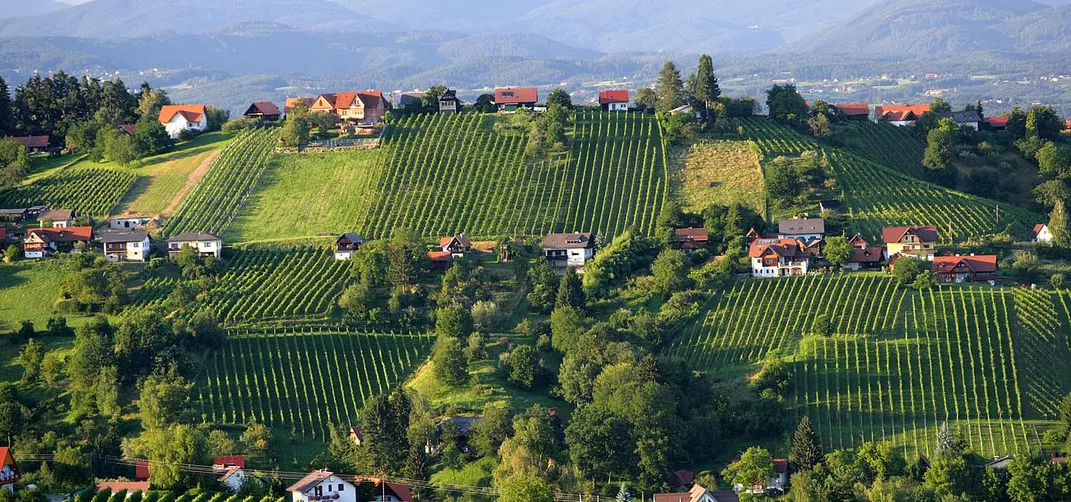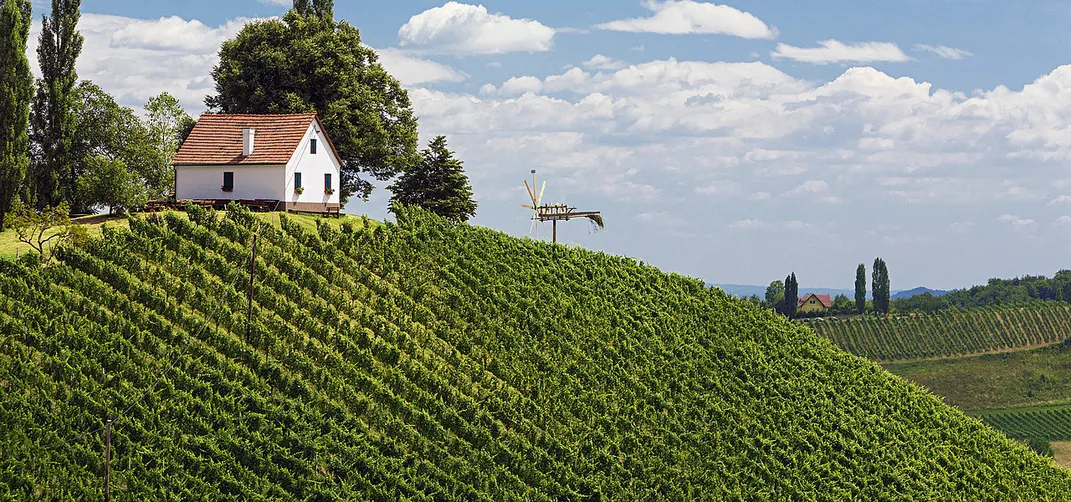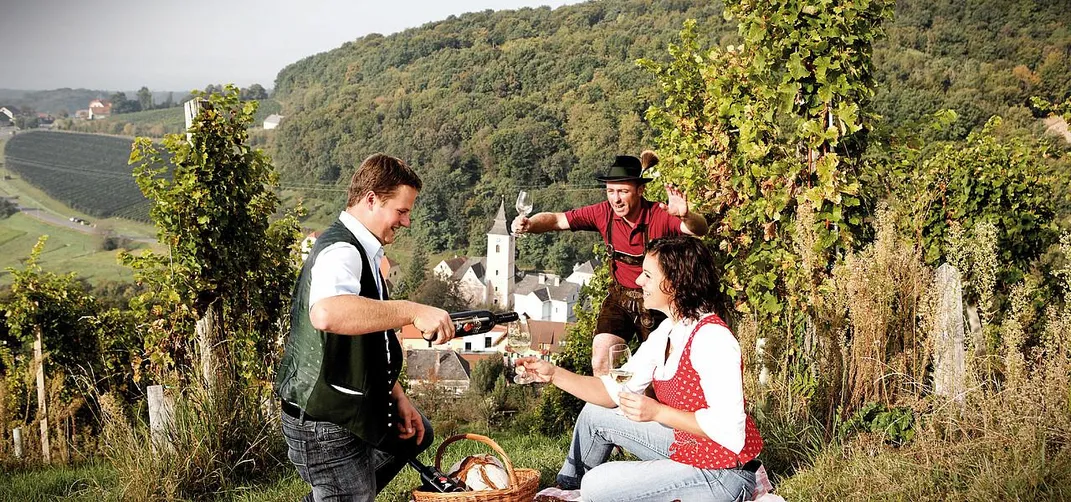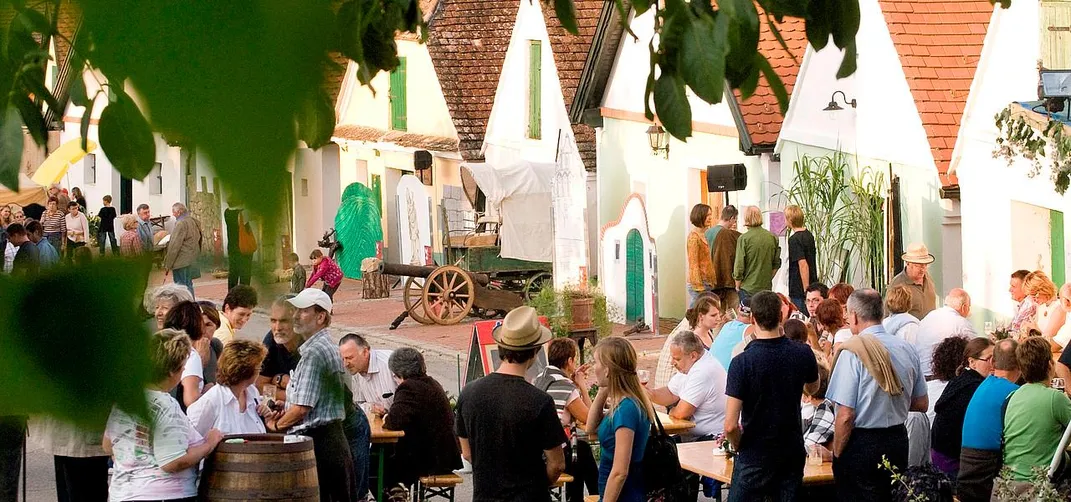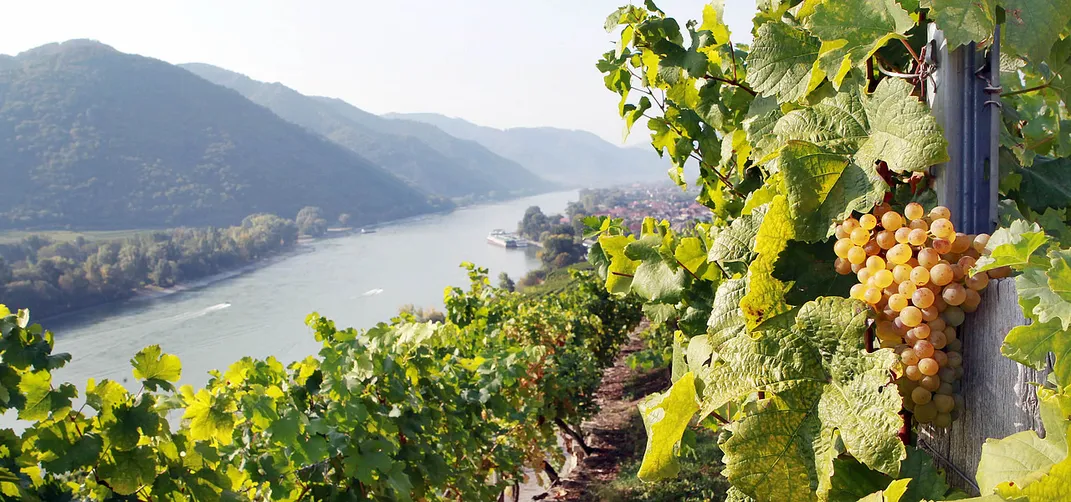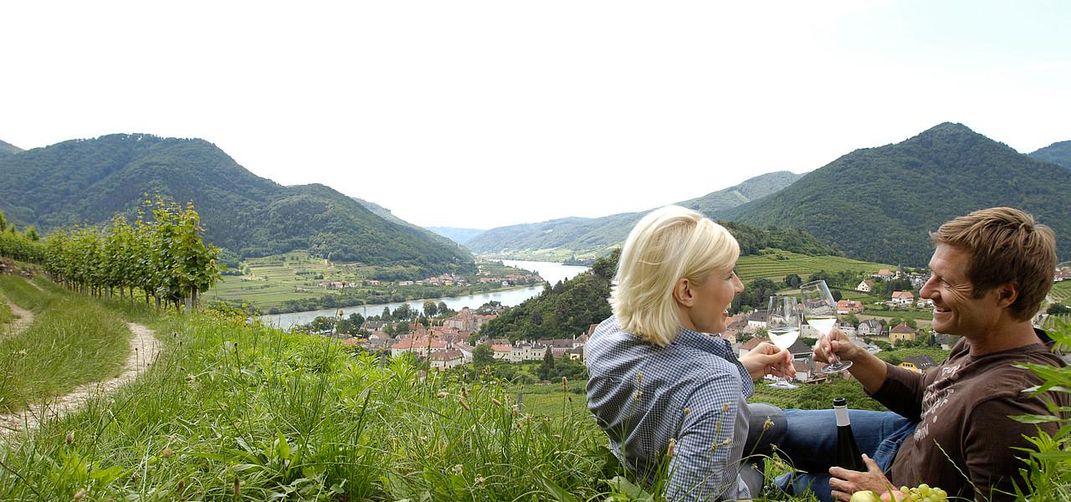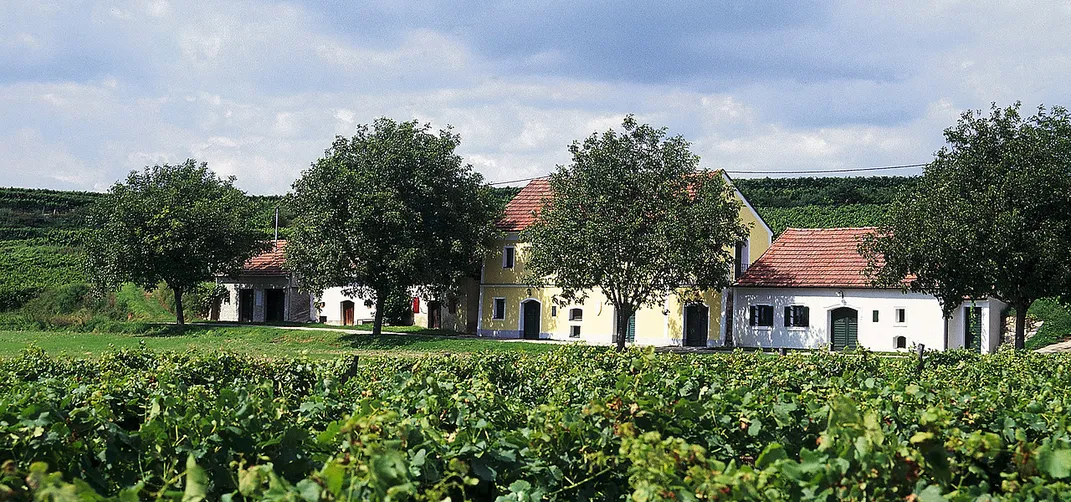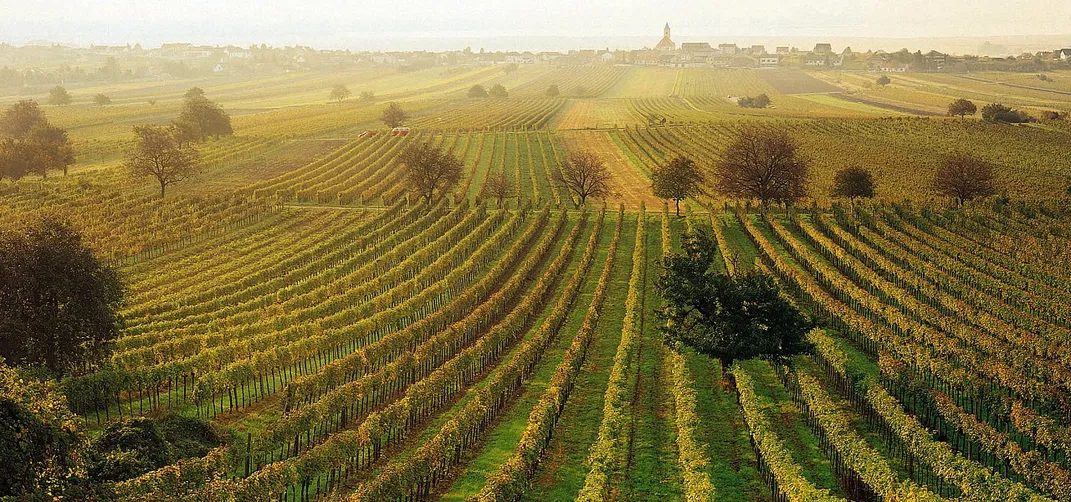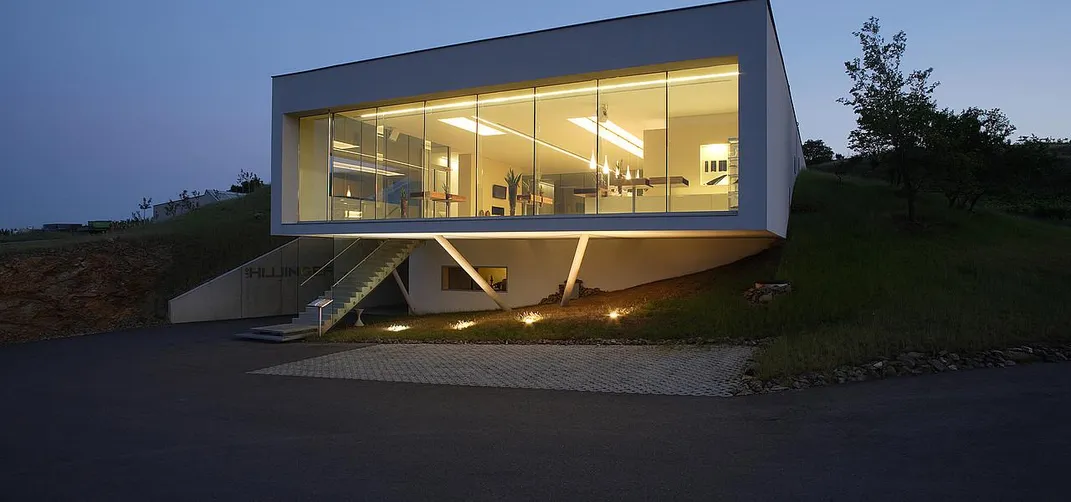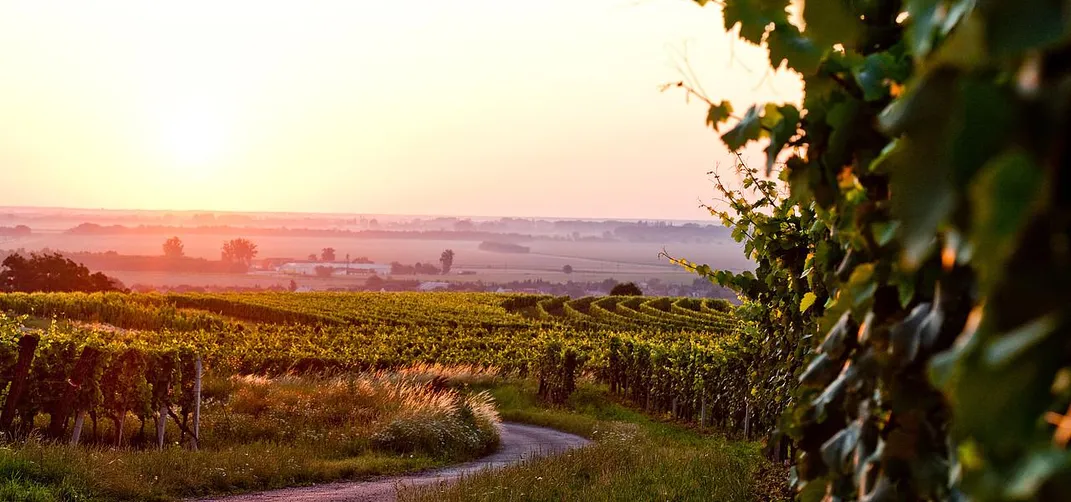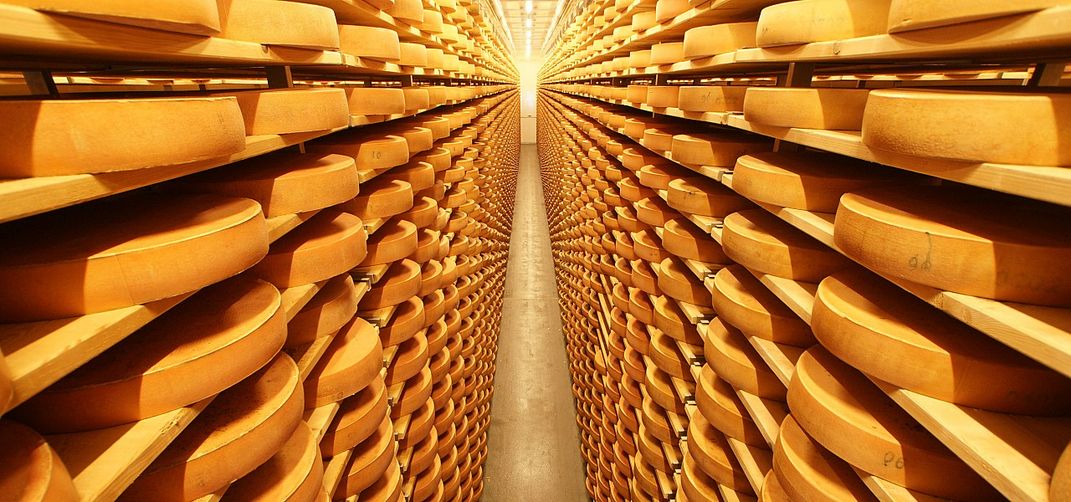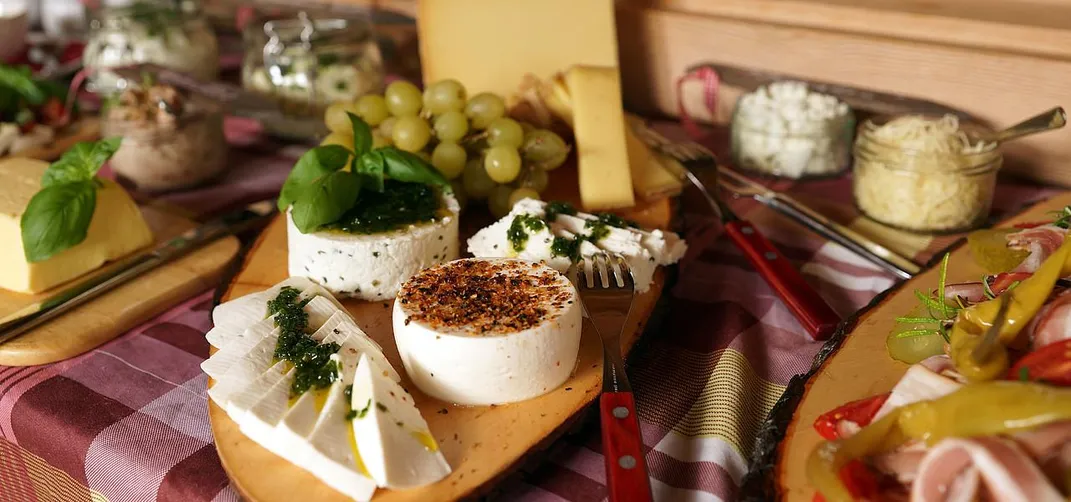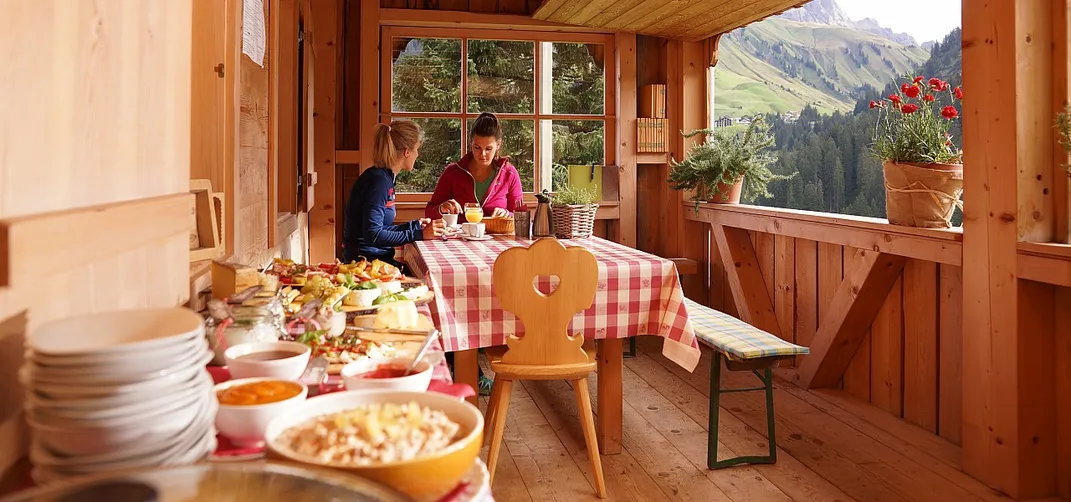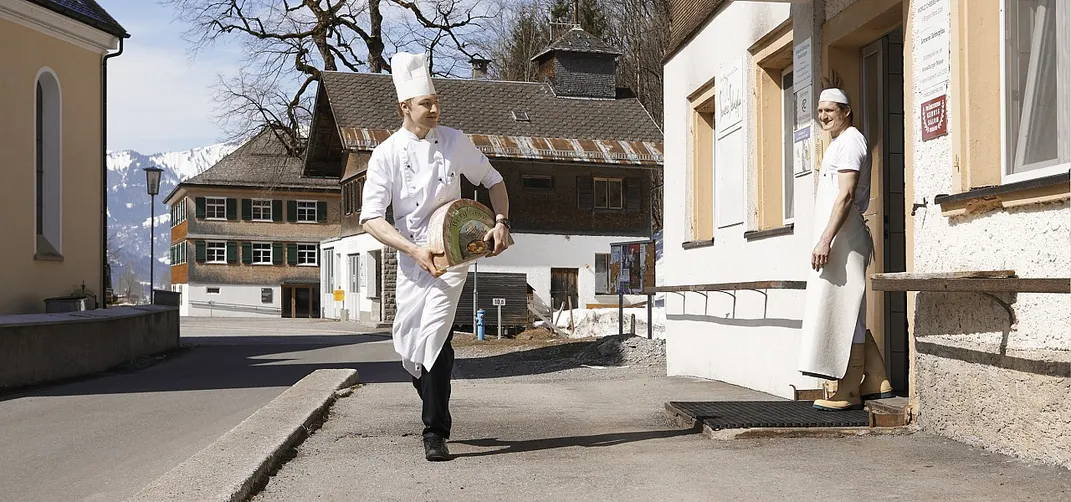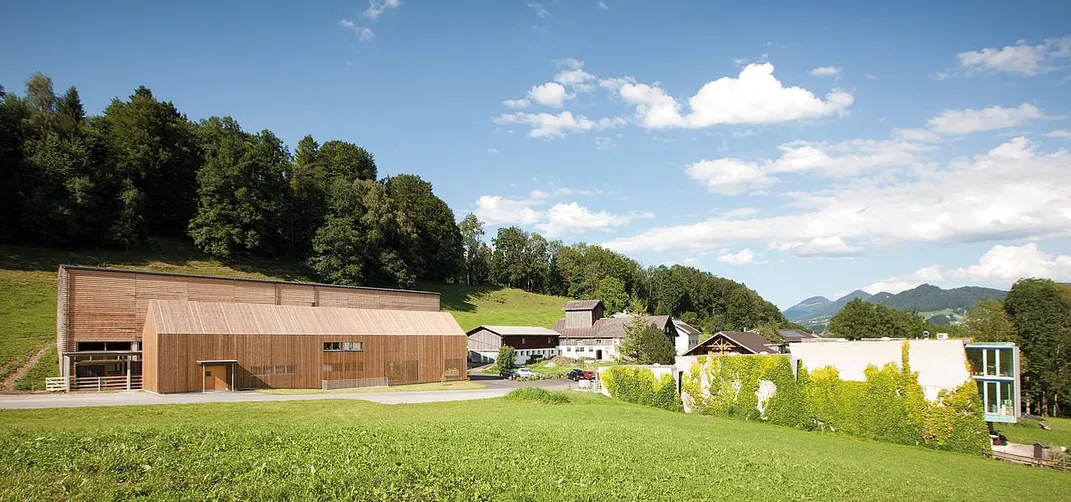Throughout Austria, dining is much more than food—it's atmosphere, location and tradition. From rural alpine inns and family-run vineyards to internationally acclaimed restaurants, Austrian dining reflects each region’s unique character. Whether sampling Styrian pumpkin seed oil at an outdoor market in Graz, sipping fruit brandy at a centuries-old alpine distillery or enjoying a pastry at an Unesco-listed Viennese coffeehouse, here are ten must-try food and wine experiences:
Try local specialties at Graz’ centuries-old farmers markets
Home to 800 urban farmers, Graz boasts the most market days of anywhere in Europe, and Kaiser Josef Market—open every day at 6:00 am, except Sunday—is at the heart of its foodie scene. Here, sample the cornucopia of garden-fresh vegetables, cured local meats, morning-baked bread and Styria’s famous green-gold pumpkin seed oil.
At one of several small restaurants surrounding the market, try traditional Styrian dishes made from the day’s freshest selections, such as crispy fried chicken served alongside endive and potato salad with pumpkin seed oil, or cream of pumpkin and roasted chestnut soup. Wash your meal down with a light, dry wine from one of the many surrounding vineyards—the Schilcher, an aromaticrosé, and Welschriesling, a versatile white, have attained cult status.
Follow the Via Culinaria’s themed trails through Salzburgerland
Via Culinaria is one of Austria’s most extravagant culinary adventures, featuring 260 destinations along nine themed routes through SalzburgerLand. Tour Austria’s highest concentration of internationally acclaimed restaurants on the gourmet route, experience authentic Austrian hospitality at one of more than one hundred alpine huts on another, or choose a specialty route featuring cheese, fish, meat, sweets, herbs, beer or schnaps. Sample everything from Pinzagau beer cheese to Tennengau mountain lamb to fish caught in SalzburgerLand’s crystal-clear alpine lakes and streams. Be sure not to skip the Bach Würfel truffle, a bonbon consisting of nut truffle, coffee truffle, marzipan and dark chocolate that was created on the occasion of Bach’s 300th birthday in 1985.
Sip from the world’s largest collection of magnum-sized wine bottles
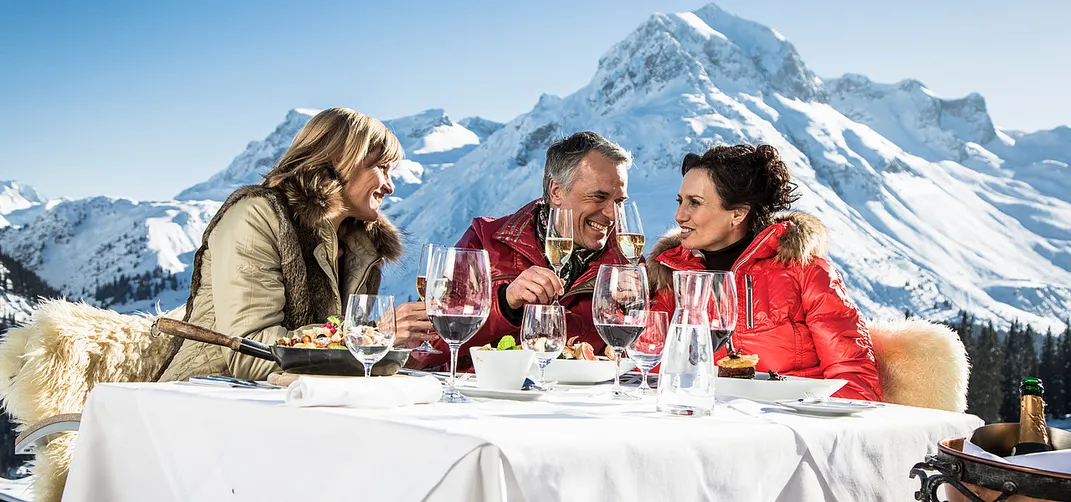
Situated among Arlberg’s world-famous ski slopes, the rustic and elegant Hospiz Alm restaurant features stunning terrace views and a rotating tasting menu of the highest quality. Dishes range from watercress soup to carrot soufflé, but gourmet cuisine is not the only reason why foodies travel from near and far to the Hospiz Alm: It is also home to Adi Werner’s award-winning collection of large-bottle wines. Werner has been collecting thousands of magnum bottles of red wine for half a century, and attracts an avid following of oenophiles. The wines age more slowly in large bottles, and only develop their full flavor after 30 to 40 years. European royalty and politicians flock to sample Werner’s rare wines in all their outsized glory. You can tour the cellar and talk to the sommelier about the history behind collecting large-bottle wine, which can measure up to 4.7 gallons.
Lift your spirits on the Tirol Schnaps Route
No visit to Kufstein would be complete without trying Tirol’s famous fruit brandies or schnaps. The first distilleries date back to 1700s, and the four along the Tirol Schnaps Route preserve many of their best traditions. At Brennerei Zum Messerschmied, schnaps are made from the same pear tree that the owner's great-grandfather planted. Start your day with a hearty breakfast of bread, pastries, milk and coffee at a wood-paneled alpine hut in the Kufstein mountains, then head out along the route and sample a wide variety of schnaps flavors, including pear, chili, juniper berry, apricot, raspberry and apple.
While away hours at a Viennese Coffeehouse
Viennese coffeehouses are an institution, so much so that Unesco declared them part of Austria’s Intangible Cultural Heritage in 2011. Beginning in mid-17th-century, the coffeehouse was the intellectual heart of the city and remains a place where one is “unhurried.” This relaxed atmosphere, known as gemütlichkeit, is evident in traditional coffeehouses such as the elegant Café Central in Vienna’s city center, where customers take their time reading a selection of international newspapers or chatting with friends over cups of coffee and delicious pastries. Try a piece of marbled gugelhupf—made from fluffy sponge and airy brioche, then dusted with icing sugar and served with whipped cream—while sipping a cup of melange, or coffee with milk and foam on top.
Have a piece of the world’s most famous chocolate cake
There is one Vienna treat so iconic and delicious that it is worth going all out for: Sachertorte—Austria’s decadent chocolate cake filled with apricot jam—is a Vienna classic and one that comes with a storied history. Concocted by Franz Sacher in 1832 while an apprentice in the kitchen of Prinz Metternich, the recipe was passed down to his son Eduard. While an apprentice with the imperial k. u. k. Hofzuckerbäcker Demel pastry shop, Eduard perfected the recipe, and Demel began selling the cakes as “the original Sachertorte.” In 1876, Sacher started his own business behind the Viennese State Opera at the now-famous Hotel Sacher, also calling his cakes the “original Sacher-Torte.” After a 25-year-long dispute, the Sacher family won the rights to the phrase, and Demel began selling their cakes as “Demel’s Sachertorte.”
Explore the tastes of the Habsburg Empire through Vienna’s varied cuisine
Vienna is the only city in the world with an entire cuisine named after it. Though known best for its Wiener schnitzel—crispy, breaded veal cutlet—Vienna is home to many more time-honored dishes that change according to the seasons. Try dishes with chanterelle and steinpilze mushrooms in late summer; roasted chestnuts, venison and pumpkin in the fall; and asparagus and ramps in spring. In winter, enjoy Viennese gulasch, a slow-cooked stew made from diced meat and vegetables. The cuisine brings together flavors from all over the Habsburg Empire, so you will taste Hungarian, Bohemian and even Italian influences.
There are countless ways to enjoy Vienna’s varied cuisine—from coffeehouses, to avant-garde restaurants with international flair, to the Viennese beisl. A traditional Viennese dining experience, beisls are known for their down-to-earth, cozy atmospheres and for serving traditional cuisine. Street stands and farmers markets such as Naschmarkt and Yppenmarkt are also increasingly popular spots to enjoy food. Be sure to pick up a jar of Staud’s jam at Yppenmarket and stop by the Bitzinger sausage stand.
Have a mountain breakfast at one of Tirol’s cozy alpine inns
Start your day with a hearty Tirolean breakfast in the mountains near Kufstein. Wood-paneled alpine inns serve homemade breads, pastries, fresh milk and butter in a peaceful setting. After fueling up, head to Kaisertal valley, a nature reserve that was voted Austria’s most beautiful spot in 2016. You can’t drive into the valley, so bring your hiking boots and don’t be surprised if you’re the only person wandering the sunny mountains.
Take a road trip through Austria’s stunning wine country
Austria boasts four spectacular wine regions: Vienna, Styria, Burgenland and the Unesco-listed Wachau Valley. Only an hour outside of Austria's capital, which is the only wine-growing metropolis in the world, the Burgenland feels worlds away. Sweet wines are tradition here, though irresistible spicy reds have entered the scene thanks to a new generation of vintners.
Centuries-old terraces, steep and misty slopes are the hallmarks of Wachau, the narrow Danube valley between Melk and Grems. Enjoy crisp Grüner Veltliner and Riesling at a historic tavern, and be sure to check out the more than 800 wine events at the Lower Austria Wine Festival. In southern Styria, visit one of the many tasting rooms along the South Styrian Wine Road and enjoy views of rolling hills while sipping elegant wines ranging from Sauvignon Blanc to the spicy Schilcher Rosé.
Stop and smell the cheese along the Bregenzerwald Cheese Road
Home to more than sixty varieties of cheese, Bregenzerwald is a dairy-lover’s paradise. Through gently undulating hills, bubbling mountain brooks, fragrant forests and verdant pastures, the Bregenzerwald Cheese Road winds past 90 alpine farmsteads. Farmers, cheese-makers, restaurants and museums all belong to this well-marked network. Sample hearty cheese platters flavored with fresh herbs at a local inn, or try your hand at cheesemaking at the dairy school in Egg. Be sure to head down into the cheese cellar in Lengenau, which houses a jaw-dropping display of several thousand blocks of maturing cheese.
* * *
Discover more exceptional food and wine experiences in Austria.
* * *
Explore Austria’s Most Unique Hotels
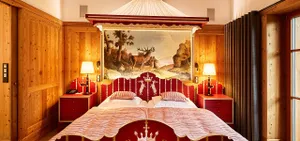 Explore Austria’s Most Unique Hotels
Explore Austria’s Most Unique Hotels
12 Reasons Why You Need to Make Austria Your Next Travel Destination

10 Unexpectedly Scenic Places in Austria
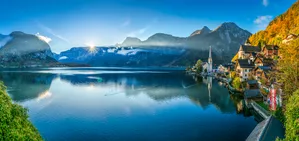
/https://tf-cmsv2-smithsonianmag-media.s3.amazonaws.com/filer/86/f3/86f326ec-b63f-49fe-8b44-85d1cbe8b85e/viennese-coffee-house-cake-sachergugelhupf-oesterreich-werbung-wolfgang_schardtjpg3622069.jpg)
